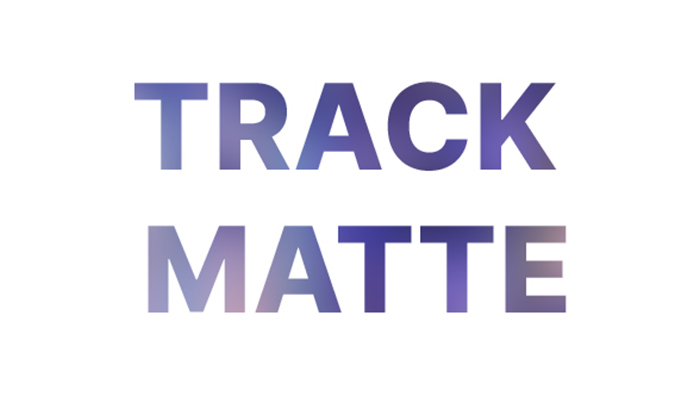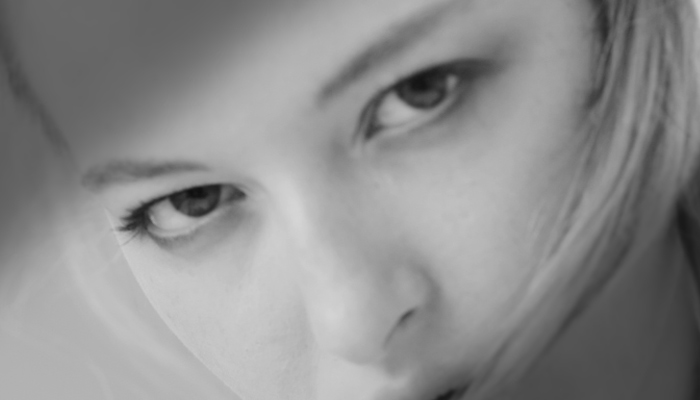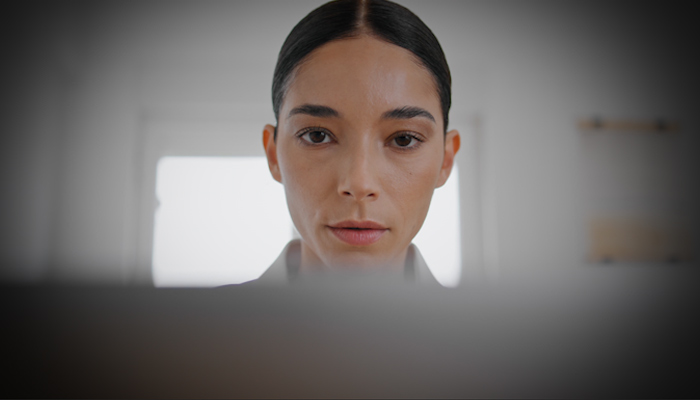Today on Art of the Cut, we are speaking with Oscar-nominated editor Jay Cassidy, ACE, about editing David O. Russell's Amsterdam.
Jay's been on Art of the Cut before for his editing of A Star is Born which he was nominated for an ACE Eddie. His first ACE Eddie win was for An Inconvenient Truth in 2007. He received his first Oscar nomination for Into the Wild and received Oscar nominations, and ACE Eddie wins for Silver Linings Playbook and American Hustle.
Art of The Cut with Oscar nominee Jay Cassidy on editing David Russells Amsterdam
Other work includes The King of Staten Island, Fury, Foxcatcher, and Joy in a career that includes more than 30 feature films.
My first question is about the structure. The story jumps around a little bit. There are some flashbacks. Did the structure change during editing from what the script was?It did. The film was first intended to be shot in April 2020, and that clearly didn't happen. In the eight or nine months we had to wait to make the film, David tried some other script structures about where this flashback could live.
The storytelling question is: how involved in the A story are you before you're willing to go on the B story in the flashback? If you're not invested enough in the characters, the flashback does not mean much. We went into the photography with two possible script places for the flashback to live, and David shot both versions. How you would do an exit ramp with this version? How you would do an exit ramp with that version? Neither of the two structures ended up being the final structure in the film.
Our evolution of the structure came through screenings and calibrating how involved in the story you are when you do this flashback. The co-editor of Joy and American Hustle — Alan Baumgarten — had a stretch of time where he could work with us, and it was just great because it was right at this point where we had screened the structure one way and not been happy with where this flashback fell. Then we had the question of should the flashback, which is maybe 17 minutes, should it be broken up into more than one flashback. So we had a classic storytelling structural question, and the only way to figure it out was kind of brute force, building different versions of the movie with different structures.
Alan came in, and we maintained 2 to 3 different versions of the movie for a couple of months, and everybody in the group who was working on the film said, “Well, I think this one's going to work,” and “I think that one's going to work.” The only arbitrator was to screen it with an audience and see how they felt. We screened different versions with different audiences and learned a lot. Alan helped us rethink the structure of this movie to really make it work. So no, the flashback was not in either of the two positions written in the script.
You mentioned Alan a couple of times, and I know you've worked with him before. Is it nice to be able to have another editor to toss ideas around?In this case, yes, because every kind of structural move means that other pieces around it have to move or need adjustment. It's nice to have somebody who's smart, and we've worked together, so we're friends. It's really easy to talk about things. And he might bring up an idea that I hadn't thought of or David hadn't thought of. It was really kind of a blessing to have another voice in the conversation. Also, in particular, HIS voice because of who he is and how much we'd work together. It's like, “Okay, good, an old friend is coming.”
I should also mention Hank Corwin, who generously did a pass when Alan and I were in the middle of the multiple-version process. Hank always has an interesting point of view on anything he works on, and, in our case, he shed some light on a few areas that carried through to the final cut.
One of the things I've talked to many editors about is the idea of how much the editor will deliver the editor's cut “to the script.” In other words, do you decide to drop things or move things, or do you try to deliver something that's as close to the script as possible?I think you try to get it as close to the script as possible, but in the case of this script, there were certain alternates that were brought to the table in the script. So in the first cutting process, you built those alternate versions. So, it was very long and had different paths through it.
We initially built the first assembly in the shooting script structure — we started there. But the way David works on the set, he will cover himself by shooting exposition into different scenes — the SAME exposition. He had certainly done that on American Hustle. We benefited greatly by having that material — we had a choice of where certain exposition is revealed or not. Or we could change which character is giving you the piece of information. He did that in several cases where the same piece of information would come through different characters and in different ways.
The first assembly was a bit crazy because if anyone watched it, they would be getting stuff over and over again, but it gave the filmmaker the ability to decide just where the audience needed to learn certain things and who was saying them became very important. The best example is Valerie's backstory once she's left Amsterdam until she tells Liz Meekins to hire Burt and Harold to do the autopsy.
Valerie’s story was an interesting evolution because, in 1918/19, she is this woman in Amsterdam who had been a nurse. She's a real force. However, when you meet her in 1933, she has medical issues that really challenge her. She doesn't seem like the same person. So how do you account for that behavior? And that took a lot of work, but because David had shot different explanations from different characters at different times in the story, we could use what we needed and pull out what we didn’t. We kept refining this story, adding a little and taking parts out right to the end.
But this way of working makes the first cut very long, and in certain cases, it doesn't make sense because you've got material repeated or you're saying something that hasn't happened or something that is going to be revealed later.
So, I just think of the assembly as the first working thing you do to begin to edit the movie. You're building the blocks. You're getting to know the material, and you're also getting to know the possible variations. The cut is long, but we went back to it all the time. You're always saying, “Well, what did we do at the very beginning? What was the very first pass on this particular editorial question?” Even when the film was almost locked, we went back and looked at it again because we were looking for little gems that are in the material that got dropped along the way and never found a home. And they deserve a home, so you find them and can only put them in when you're confident enough with everything else.
 (L-R): Christian Bale, Margot Robbie, and John David Washington in 20th Century Studios' AMSTERDAM. Photo courtesy of 20th Century Studios. All Rights Reserved.
(L-R): Christian Bale, Margot Robbie, and John David Washington in 20th Century Studios' AMSTERDAM. Photo courtesy of 20th Century Studios. All Rights Reserved.
If you just assemble it like the script, you're not necessarily including everything that’s shot on the set. David tends to shoot the script with the actors, and then, once they've done that, they tend to do other variations that they come up with along the way in the shooting process. So, if you just tried to cut the script, you'd be leaving a lot out. I think that would be a mistake. And so that's where you have to realize, “I'm not making the movie here. I'm making the scenes and the pieces that I will then be able to use to construct the movie.”
There were certain basic structures in the script that stayed the same. In the scene where Burt Berenson gets knocked out and wakes up, Tom Vose is over him, offering him the brandy. That scene, because it's the end of act one, had so many variations shot because you're beginning all these new act two ideas, and you're bringing in new characters and new relationships. The first cut of that scene was probably twice as long as whatever was on the screen and had many other topics discussed within it. They were all in the script, more or less. But once they shot it, they would take a run on a topic that might not be in the script, but you needed to build that into the assembly, so you knew what you had.
In the opening autopsy, there's a shot of some roses that Burt brings to the autopsy. Can you talk about that choice to put that in?It was a very conscious choice. When you begin a movie and introduce the protagonist, you are well served if it can be established what the character wants as soon as possible. Part of investing in the character is the audience’s particular judgment of what he or she wants.
The perfect example in David's other film — Silver Linings Playbook — at the very beginning, you meet Pat Solitano in the mental hospital, and he's having a dialogue with his wife, talking about their future together, and you suspect that he's delusional, but you learn what he wants. He wants to get back together with his wife, and he's assuming that she does too, which is part of his delusion.
In this movie, Burt Berenson is trying to find out why he's never truly experienced love in his life. So, in order to establish that at the beginning, you had to see what he thought he wanted with his wife — that aspiration that he was holding on to since he met her while in medical school. And so the flowers are the physical manifestation of what he's holding on to, which is his illusion about his marriage and his version of love.
You first see it when he walks out of his office and goes to meet Harold. Harold immediately nails him about “What are those flowers you're holding?” And he says, “Dinner date with Beatrice.” Then Harold immediately expresses his disappointment. Before they're able to resolve any of that, up comes Liz Meekins, and the scene just goes in another direction. But this introduces the conflict he has about his wife, and so that must be kept alive.
To do that, David came up with the physical manifestation of the flowers. If you track it through the first act of the movie from the Mortuary; he drops the flowers and his bag when the casket comes out, and as the whole scene over the casket is played, the flowers are on the floor, but you see him pick them up when they start to roll the casket out. When they get to the autopsy, the flowers aren’t shown right away, but they appear at the point where Irma says, “My man left. These kinds of things happen every day.” Then we cut to the flowers, almost being overly explicit, but it brings back Burt’s plans for the evening with Beatrice.
Burt apologizes to Irma, and then she says, “True love is based on choice, not need,” which is what Burt's been wrestling with his whole life. So, you see the flowers, and though you don't see him take them from the Autopsy, the next scene — when he's on the street with Harold – the camera pans down to them as they walk. He has them all the way through the diner and the meeting/murder of Liz Meekins, and he still has them all the way through the whole chase.
The entire flashback occurs, and he still has the flowers. It's only when Beatrice in the apartment says, “Is there something wrong with your back? Let me look at it.” Then you see the flowers in a big close-up come crashing down to the floor. And then the poetry book lands on top of it. So it was a way that David came up with to visualize and signify in a mini-metaphor of what Burt wants and the flaw in it. That even his best friend is warning him away from it. It's a sign of his illusion about love. That's where the flowers came from. And that's why they were there.
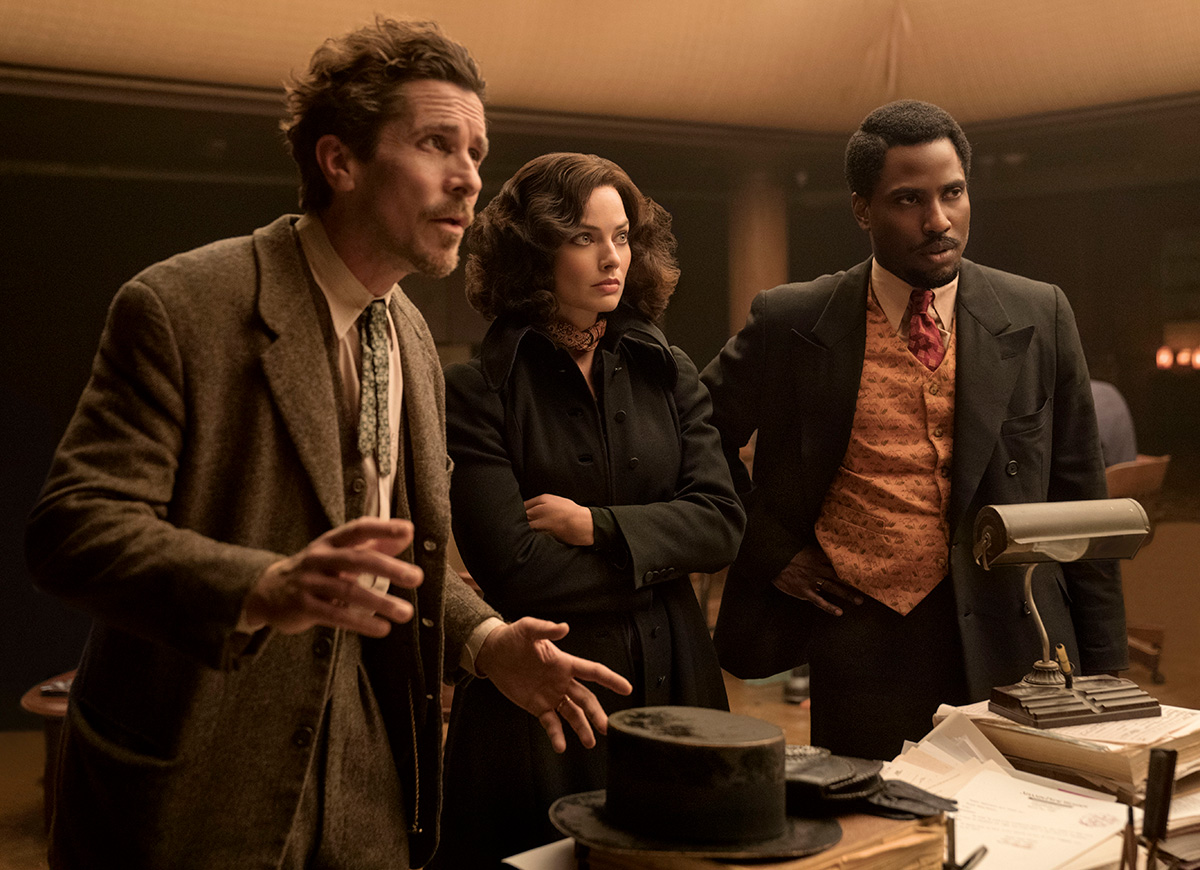 (L-R): Christian Bale, Margot Robbie, and John David Washington in 20th Century Studios' AMSTERDAM. Photo courtesy of 20th Century Studios. All Rights Reserved.
(L-R): Christian Bale, Margot Robbie, and John David Washington in 20th Century Studios' AMSTERDAM. Photo courtesy of 20th Century Studios. All Rights Reserved.
No. He didn't tell me about them. I saw the flowers and said, “What's up here?” Because of the pandemic, I didn't talk to him really much for the whole shoot, and he was so busy on the set. It's so consuming.
It seems like most of that scene is played without a score, and then at a certain point, the score comes in. Can you talk — even if it's not about that scene — can you talk about how and when you choose to spot score? When do you say, “NOW I need music.”I mean, that's a pretty good example because the score comes at the point where the rhythm of the scene changes. The scene is real time when they're talking about “getting coffee with Irma,” and Harold and Chris Rock are there, and the nurse comes in and says, “These two have to leave…. Irma can stay because she's Portuguese, and that's different.” That's all real-time, but as soon as Burt looks down at Meekin’s body and he says, “He was such a kind man.” At that point, the scene moves ahead in time, cutting to the body that is already open. The scene starts to move in non-real time. Each of the cuts — I think there are five or six cuts — they're all slightly different angles. They're just little moments from the autopsy, and so that became the point where — since you're changing the storytelling rhythm — this feels right to begin the music cue here.
And the music cue plays to the point where the rhythm in the scene changes again, which is on the tilt from the stomach up to the little cup. At that point, I thought, “Oh, okay, we're back to the story issue here, which is their old friend, General Meekins, has poison in his stomach.” The music stops for a couple of beats, and then it starts up in a kind of variation — a theme that you're going to hear later — that's darker. It's fairly short. It just carries you to the point where Irma tells Burt that Harold thinks that Burt has followed the wrong god home. In other words, when you come back to the other issue of the scene, which is: is love need or is it want?
Let's talk about the shooting style of the film. There are some big closeups on a pretty wide-angle lens if I know my lenses well enough. And they're kind of Coen brothers-style, meaning that the camera is kind of in between the two actors instead of over the shoulder of one actor pointing to the other. Does that affect your editorial style — the shooting, the way those closeups were done?It's only done that way in certain scenes. The best example is the scene where Harold and Burt come to the Voze mansion. They meet Valerie after not seeing her for 12 years, and then they all go into the back room. The scene is staged as the classic triangle. You have the camera in the center of the triangle so that Burt’s always looking left to right at Valerie. Valerie’s always looking right to left at him. Valerie is looking left to right at Harold. Harold's looking right to left to Valerie. Yet the circle gets completed because Harold's looking left to right to Burt, who's looking right to left to Harold. So it's that wonderful triangle staging that so many other filmmakers have done, and the singles are so appropriate after spent 15, 20 minutes in Amsterdam building their relationship and seeing how it has been shattered, they're trying to figure out just what's happened.
Valerie — who has paid the biggest price for the breakup — is the one who's taking the strongest position “If you two still have a pact, I'm still part of it.” Harold is the most skeptical because his heart was broken in Amsterdam. He's more reticent to accept her right away.
That staging is Chivo (the nickname for cinematographer Emmanuel Lubezki) and David — the way they picked the lenses on the set — and the way they decided to block it. And it's done for a reason.
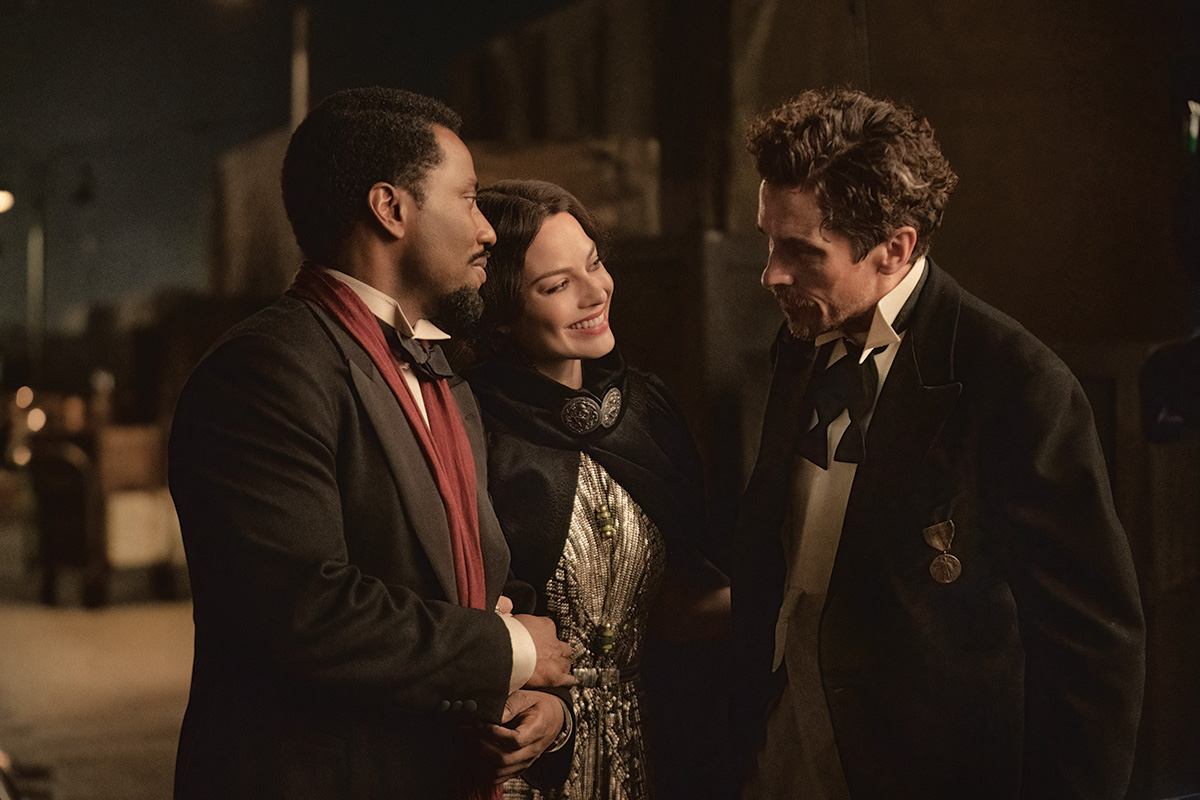 (L-R): John David Washington as Harold, Margot Robbie as Valerie, and Christian Bale as Burt in 20th Century Studios' AMSTERDAM. Photo by Merie Weismiller. © 2022 20th Century Studios. All Rights Reserved.
(L-R): John David Washington as Harold, Margot Robbie as Valerie, and Christian Bale as Burt in 20th Century Studios' AMSTERDAM. Photo by Merie Weismiller. © 2022 20th Century Studios. All Rights Reserved.
Sometimes when you see something in a film, it looks like it was done for a reason, but often, it wasn't, and the filmmakers are just lucky they have it. But that’s the mission in editing, make everything look like it was intended to be that way.
I love those things when they happen like that. There are some pretty strong color shifts between scenes. Can you talk a little bit about how that color came to you in dailies? Were you actually editing with that color, or did that happen later on?We set up a workflow where the color that the dailies colorist colors in — which is something Chivo looks at and manages from the beginning — was going to be the color that we would get in the cutting room. We got rid of the Rec 709 color space and worked in the D65 P3 color space, which you can do these days because the monitors can display it. With a big Panasonic monitor, you can dial that color space right in. And this workflow — which was set up by Company 3 — was with the intention that all through the editing, we’re at least looking at the color as intended through the dailies process. Also, it helped Chivo because he wasn't having to compensate for “Well, I had a dailies color, and now it's in Rec 709, so it's a little different and it doesn't have the blacks and the reds are gone.” We just leveled the playing field of the color, to begin with. And this was blessed by Company 3. When they started the grading, they could refer to the dailies color in the cut in the same color space as the grade.
With previous incarnations of the monitors, you had to scrunch the signal all the way down to Rec 709 constraints to fit the monitor. You don't have to do that anymore. It just conditions people to see the color in the way it was shot, and when graded, the transformation between the dailies and the final color was much less. There was no big shock which occurred in the digital intermediate early days, especially with some of the film LUTs which were so different than the color you would have seen in Rec 709. People's heads were spinning. They were saying, “This is not the same movie.”
This has been an ongoing evolution. I have to credit Company 3 for enlightening the path for us.
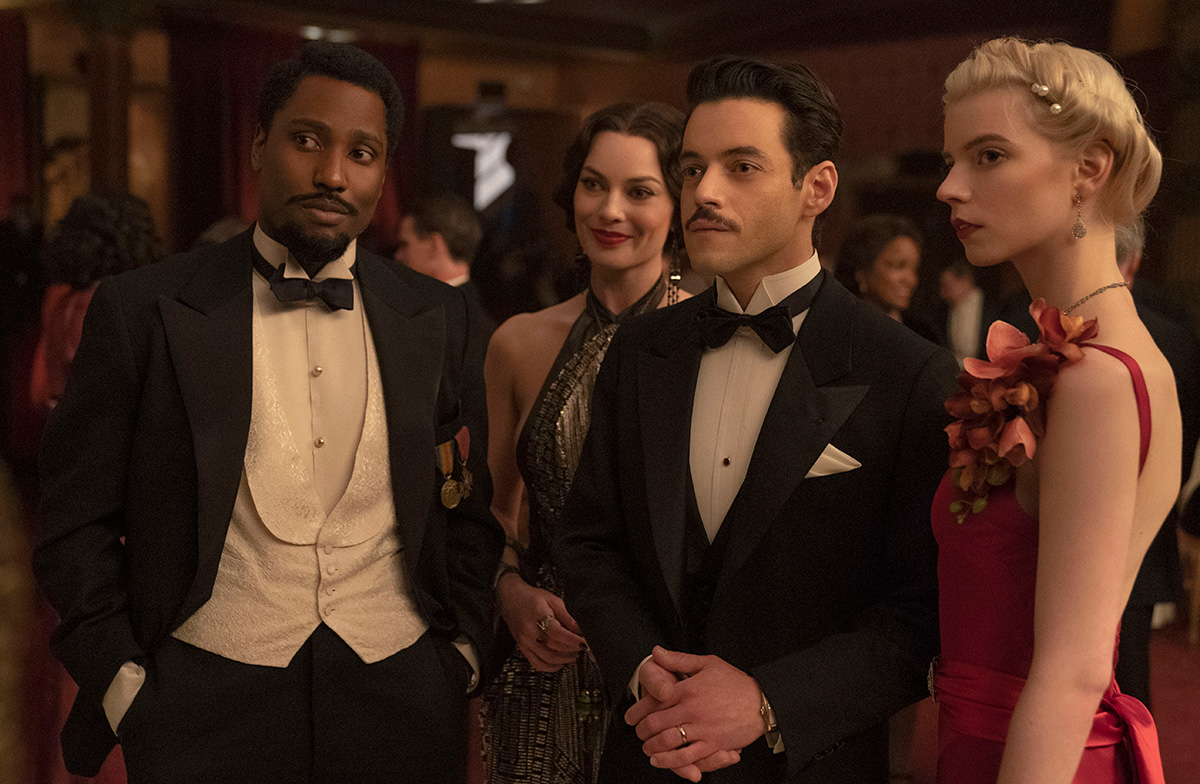 (L-R): John David Washington as Harold, Margot Robbie as Valerie, Rami Malek as Tom, and Anya Taylor-Joy as Libby in 20th Century Studios' AMSTERDAM. Photo by Merie Weismiller Wallace; SMPSP. © 2022 20th Century Studios. All Rights Reserved.
(L-R): John David Washington as Harold, Margot Robbie as Valerie, Rami Malek as Tom, and Anya Taylor-Joy as Libby in 20th Century Studios' AMSTERDAM. Photo by Merie Weismiller Wallace; SMPSP. © 2022 20th Century Studios. All Rights Reserved.
No. There was very little color correction done to the dailies on the Avid timeline because Chivo had so precisely controlled the dailies color during the shooting.
At one point in the film, there’s a discussion about birding and you had to somehow cross the 180. Do you remember doing that? And did you think, “Oh, how am I going to get this accomplished?”There are two discussions of birding. The first discussion is when Paul and Henry bring it up, and they're showing the birds. I don't think you mean that.
No, no, it's not. It's the one with Rami.It begins on one side of the line in the two-shot. When you go to the close-up of Rami, you just jump the line. I didn't even think about it. I know why Chivo did it, because in the two-shot, the light wasn't as good. And when he wanted to do the close-ups, he just said, “Well, let's just go with the best light,” which just meant kind of jigging the blocking around. I forgot that we even did that.
It works.And there's no reason to go back to the two-shot so that you're not exaggerating it. It's such a beautiful shot of Rami that you're just sort of happy to be there. You're listening to what the two are saying. They're standing in a place in the two-shot — even though you jumped the line — you haven't rearranged the actors. They’re more or less in the same spot. So, the audience usually goes with you on that sort of thing.
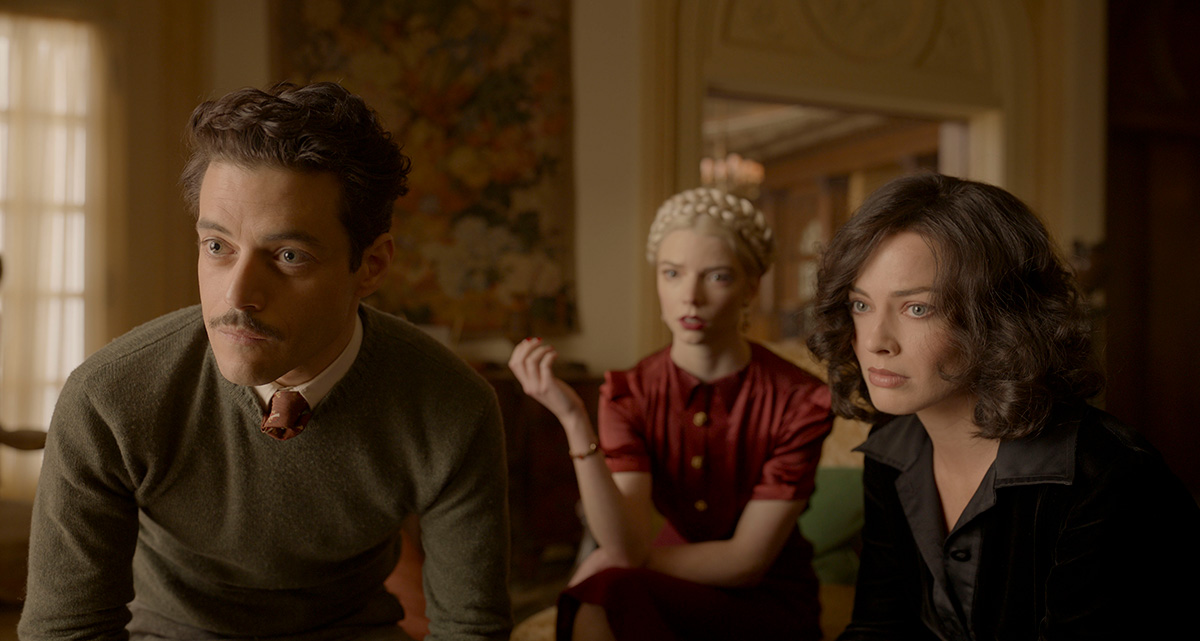 (L-R): Rami Malek, Anya Taylor-Joy, and Margot Robbie in 20th Century Studios' AMSTERDAM. Photo courtesy of 20th Century Studios. © 2022 20th Century Studios. All Rights Reserved.
(L-R): Rami Malek, Anya Taylor-Joy, and Margot Robbie in 20th Century Studios' AMSTERDAM. Photo courtesy of 20th Century Studios. © 2022 20th Century Studios. All Rights Reserved.
No. If it works, you don't notice or care.
Especially if the camera angle is right, or, like you said, if you could understand the blocking or if you understand the geography of the scene, somehow it works. Another big scene that I would have been terrified to edit would be the climax. You’ve got almost the entire cast. Can you talk about editing that climax scene where everybody's kind of talking about each other?Like many things, it went through many iterations, but the key to it was always — in all the iterations of it — was to get you into Burt’s head early so that you’re hearing it from his point of view. He's just been shot. I think there's a line or two as the scene begins and then you go into Burt, and he says in VO that if it wasn't for the eyedrops that Tom had given him, he wouldn't be there. That's the only thing that was keeping him going.
So once you realize you're hearing it from this distressed point of view, you could be less literal with the conversation and just let the lines overlap. You're not presenting a legal brief at the end of the movie. You're providing enough substance to the back story that the audience believes what happened. You provide half of the information and let the audience fill in the rest. And you try not to be didactic about it. We let the humor play when Valerie realizes that Tom might have had something to do with her health problems — that she's been gaslit for all these years — and he finally admits it.
Once he admits it and you get her reaction, Tom’s justification takes you to Chris Rock's outrage about hearing Tom say, “consorting with a black man!” ending the humor. The racial element takes over the scene for a moment, and then Harold pulls it right into the idea of the sterilization clinics. No resolutions to any of the issues that are discussed. They just cascade into one another because that's the way Burt is able to perceive them in his addled state with the eye drops.
Then you have these little parenthetical explanations coming out of Burt’s head, and they're wrapped in his feeling of, “Oh, I see! Tom used us to get to the General” because that's the bigger issue.
In the many iterations we tried, there were too many explanations, and we lost the audience in the weeds. But if you hit on everything but didn't nail each down, and just when that subject might be discussed, you move to the next one, to get to that question of, “What do these rich people want?” That's what the scene has been building toward.
 (L-R): Michael Shannon as Henry Norcross, Mike Myers as Paul Canterbury, Christian Bale as Burt Berendsen, Chris Rock as Milton King, and Robert De Niro as General Gil Dillenbeck in 20th Century Studios' AMSTERDAM. Photo by Merie Weismiller Wallace; SMPSP. © 2022 20th Century Studios. All Rights Reserved.
(L-R): Michael Shannon as Henry Norcross, Mike Myers as Paul Canterbury, Christian Bale as Burt Berendsen, Chris Rock as Milton King, and Robert De Niro as General Gil Dillenbeck in 20th Century Studios' AMSTERDAM. Photo by Merie Weismiller Wallace; SMPSP. © 2022 20th Century Studios. All Rights Reserved.
None of the flashbacks were scripted in the end sequence, but they didn't have to be because David took the approach of just getting the meat and potatoes of the scenes between the characters shot, and he'd figure out in the editing how it would unfold, which is certainly how we did it.
What's your approach to dailies? How do you watch dailies specifically, and where do you begin to start constructing a scene?I lean heavily on the script tool (ScriptSync) in Avid Media Composer, and even if every little mark is not set when I’m ready to screen, it is valuable to use the script for notes in the first viewing. You can type annotations into the script or on the dailies themselves with locators. I try to spend enough time with it that I feel I’ve lived on the set for the day or the hours that it took to shoot the scene. So, you see where they started and where they ended up as a creative unit with those actors, this director, and this script.
Then once you do that, I say, “Well, okay, I'm going to make the first pass on this and see how it feels.” In terms of the evolution on the set, that's going to affect what you choose for the performances. If they start here and go there, usually where they go is the richer material to draw from.
So you're saying that because you know that that's where the director has the actors where he wants them, that that's going to get you closest to the director’s intention.If that's what happened on the set. Beyond this film, it's going to be different for different directors and different actors. Sometimes you'll find a situation where early takes are much better. There's something about doing it for the first time that brings out something with a particular actor or particular material.
You can't generalize from that, but you can take the time to see how the shooting evolved and where they started and where they ended up. And from there, make your choices understanding that evolution and understanding that in some cases you may make the wrong choice in that, “Oh, okay, I'm picking from THIS part of where the scene evolved.” And when it ends up in the movie, and you're looking at it in context, you say, “No, you should really be sort of pulling from THAT part of the scene.”
It's — “wrong” is the wrong word in a sense — it's just one choice versus another. The context of the film is always going to validate the choice. So if you end up with takes in there that aren't quite working and you have better ones, you think, “It wasn't that I chose the wrong one. I just chose the one that day that felt right,” and now — a month or two later — when you've got a movie built around it…
You see the context.Yeah. That choice doesn't work. You need to adjust it. That takes any kind of ego out of the choice. Sometimes it's just helpful — especially if you've lived with a certain set of performances for a while — to simply pull it apart and try other performances. A lot of times all you learn is that you have the right ones in the first place. But it is a helpful exercise because it can validate or it can enlighten. You can see how these other takes, which are subtly different, are takes that you may like better. It may or may not make any difference to the whole play of the film, but somehow in the process, you found something that was just slightly different and helpful.
 Christian Bale and Writer/Director/Producer David O. Russell p.g.a. on the set of 20th Century Studios' AMSTERDAM. Photo by Merie Weismiller Wallace; SMPSP. © 2022 20th Century Studios. All Rights Reserved.
Christian Bale and Writer/Director/Producer David O. Russell p.g.a. on the set of 20th Century Studios' AMSTERDAM. Photo by Merie Weismiller Wallace; SMPSP. © 2022 20th Century Studios. All Rights Reserved.
That's exactly what it is.
No general rule of thumb for sure. You've worked with David Russell — as we talked about — on four different films. How do you develop a relationship with a director that's that strong? I mean, obviously, you've got editing skills, but there's got to be something more to it that he keeps coming back to you for.Any director-editor relationship has to be beyond the film. You have to have a certain similarity in outlook on the filmmaking process. In terms of your own particular taste, it has to fall in line with his or her enough so that he or she feels comfortable about the choices you are making.
Everyone who has spent hours in the cutting room knows that the discussion often ranges far beyond the movie you're working on into other movies and why they work or didn't work, whether you liked them, or he or she likes them.
You talk about a lot of things in the process, and the way that that interaction occurs creates a comfort level that makes the creative choices easier.
In this era of COVID, were you two able to work together in the same room?Certainly not during the shoot at all. All of the assistants were remote for four months. I didn't see David or the editorial crew for the entire shoot. Since the shooting started before the vaccines were out, the company had to take a very aggressive COVID stance.
They got us in a cutting room situation where they just created a bubble and testing would be done on a regular basis. It took about a month after the photography to kind of get that set up.
There's a price you pay for trying to work remotely. It's hard to approximate the environment you have when you're in the room and you're looking at things and you're comparing takes and you're looking at other takes and you really intensely working. That's harder to do in the remote situation because you can't feel the other person who's responding to the material as you're going through it. Who knows what distractions are going on for them?
We did a little bit, but you know, 95% of it was done in the room together once we had the bubble established.
Jay, thank you so much for spending this time with us and really sharing some of your wisdom and a little bit about the film. I really appreciate your time.Happy to do it.
